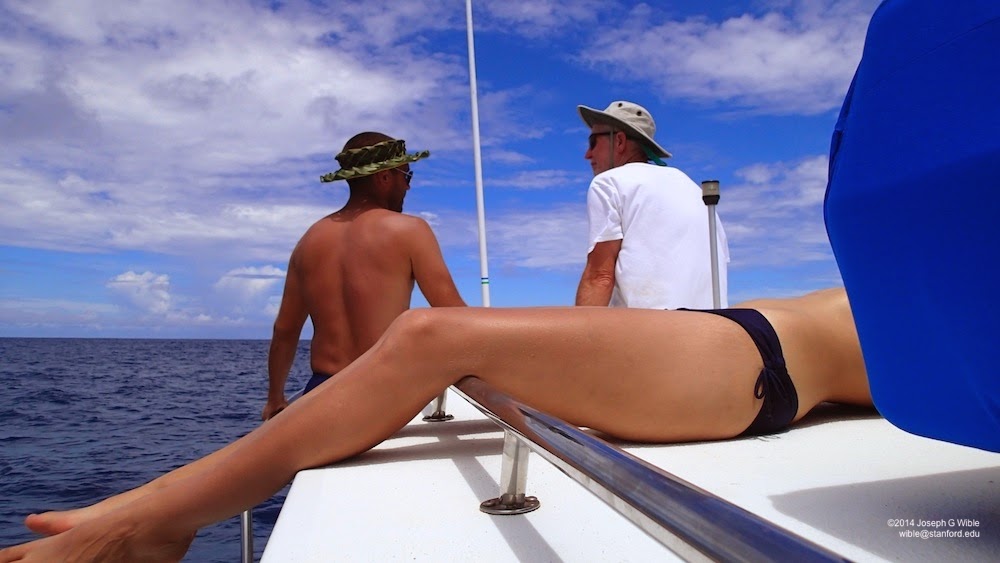terra cotta tiles on a stick heading back to the lab
Today joining us on the boat was U.S. Fish & Wildlife officer Lindsey Hayes. Lindsey is here for 3 weeks while the resident officer, Stefan Kropidlowski, is back on the mainland having some dental work done. Since it was a last minute opportunity for Lindsey, he wasn't able to get all the medical paperwork and training done to meet AAUS scientific diver requirements before heading out with us to Palmyra. This means he can only snorkel. We had great sea conditions today, so Lindsay spent lots of time snorkeling above us as we worked below. Ah, the joys of diving in clear tropical waters such that you can see the bottom at 40 feet. Lindsey took some photos from the surface, so I am hoping some of them came out so I can share one on tomorrow's blog.
More blue skies today, so here you can see Lindsey, Paul, and Sabina enjoying the trip back to the lab on the deck of the Zenobia. Notice Paul is sporting his complete palm hat. He has plans to give lessons to everyone who wants to learn how to make one.
Paul (sporting new palm hat), Lindsey, and the bottom half of Sabina
There was a nice low tide as we crossed the lagoon, so you can see the extensive sand flats that surround Palmyra Atoll.
low tide showing the extensive sand flats around Palmyra
While the tile work for coral polyps is going well, we have abandoned the side project to collect small samples of crustose coralline algae (CCA) from the plates. The process was messy, was not very quantitative, and was going to significantly eat into the time needed to complete our primary task. Below is a tile showing our attempt at drilling out a small plug of CCA.
tile #16 with the round area where we attempted to collect CCA




No comments:
Post a Comment